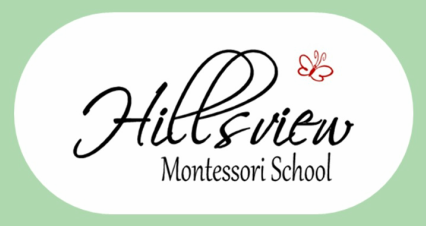Our Program
We are guided by the traditional Montessori curriculum goals and objectives as recognized by the American Montessori Society (AMS). Dr. Maria Montessori spent her life working with young children and developed her successful methods of teaching over 100 years ago. Montessori is a hands-on learning environment where the child learns through their senses. In our classrooms, the children work independently and at their own pace in the areas of Practical Life, Sensorial, Language and Math. We strive to maintain a balanced curriculum of academics, cultural studies, art & music, physical education and character development. Throughout the year our unit studies will include things like Geography, Astronomy, Anatomy, Nutrition, Zoology, Botany, Yoga, Sewing, Bible stories and much more! For an example of a typical day, click here.
Practical Life
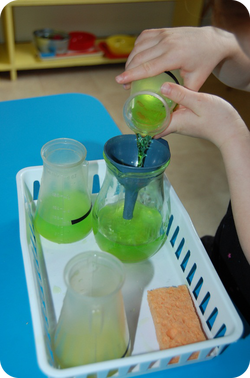
The exercises in the Practical
Life area serve as the foundation on which everything else in the Montessori
classroom begins. The direct aim of the
Practical Life exercises is allowing the child to learn and practice skills
that are necessary for living in the culture to which they are born. The indirect aim of the exercises of
Practical Life is to develop the inner sense of calmness, order, and
concentration, as well as developing coordination and fine motor skills. As the child masters increasingly challenging
and complicated tasks, they are being prepared for the exercises in math and
language. Also, as the child learns to
meet their own needs, take care of the classroom environment and help others
they begin to develop independence, self-confidence and self-respect.
“Any child who is self-sufficient, who can tie his shoes, dress or undress himself, reflects in his joy and sense of achievement the image of human dignity, which is derived from a sense of independence.”
Maria Montessori
Maria Montessori
Sensorial
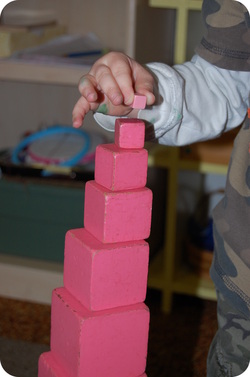
The purpose of the
sensorial materials in the Montessori classroom is to develop and refine the
child’s senses. The design of the
materials appeal to the interest of a child when they are in the sensitive
period for sense development, which is age two to six. Dr. Montessori designed the sensorial
materials in a very precise and scientific way in order to isolate the tactile
(including stereognostic), visual, auditory, olfactory, and gustatory
senses. The materials provide a
concrete, sensory-motor way for the child to classify the various qualities he
sees in his environment. Within the
materials, there is a control of error, which helps the child correct his own
mistakes. The individual quality that is
to be discriminated (such as color or sound) is isolated to simplify
learning. The isolation of difficulty
helps the child focus on one sense at a time.
There is a direct connection between the brain and the hand. What the child learns through his hands, he also learns and stores in his brain. The child then has the organization and patterning skills necessary for more abstract math and language development. The age of sensation is one of the longest and most important in the child’s development. Dr. Montessori recognized the instinct for sensorial development and “endeavors to allow them the fullest play, harnessing them to educational purposes.” (The Montessori Method).
There is a direct connection between the brain and the hand. What the child learns through his hands, he also learns and stores in his brain. The child then has the organization and patterning skills necessary for more abstract math and language development. The age of sensation is one of the longest and most important in the child’s development. Dr. Montessori recognized the instinct for sensorial development and “endeavors to allow them the fullest play, harnessing them to educational purposes.” (The Montessori Method).
“There is nothing in the intellect that was not first in the senses.”
Aristotle
Aristotle
Language
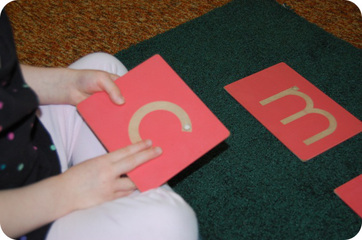
In the Montessori
classroom the children learn to speak, write and read the language that is used
in their culture. The practical life and
sensorial materials in the classroom form the foundation as an indirect
preparation to the development of language.
The fingers used in writing are developed by the small knobs of the
knobbed cylinder blocks. The
discrimination of size and shape is taught by material like the constructive
triangles or the geometric cabinet.
The alphabet in the Montessori classroom is taught phonetically, thus, the children learn the sounds of each letter first and can then begin forming words. Reading and writing are taught at the same time, using the sandpaper letters. The child uses the tactile-muscular sense and associates the sound with the symbol. The child reads when they recognize the sound and writes when they feel the shape of the letter.
The alphabet in the Montessori classroom is taught phonetically, thus, the children learn the sounds of each letter first and can then begin forming words. Reading and writing are taught at the same time, using the sandpaper letters. The child uses the tactile-muscular sense and associates the sound with the symbol. The child reads when they recognize the sound and writes when they feel the shape of the letter.
“The only language men ever speak perfectly is the one they learn in babyhood, when no one can teach them anything!”
Maria Montessori
Maria Montessori
Math
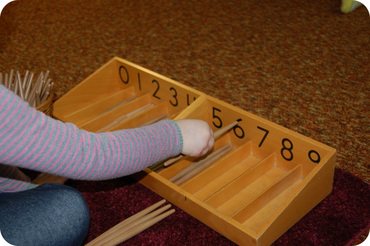
Maria Montessori believed that all humans are born with a “mathematical
mind”. In a Montessori classroom,
beginning around age 2 ½, children are introduced to mathematical concepts in
concrete form. However, working with the
math materials does not begin right away.
The child is prepared indirectly for the math materials through their
work with the Sensorial Materials and the Exercises of Practical Life. This approach to math allows the students to
internalize math skills by using concrete materials and progressing at their
own pace toward abstract concepts.
“The hands are the instruments of man's intelligence.”
Maria Montessori
Maria Montessori
